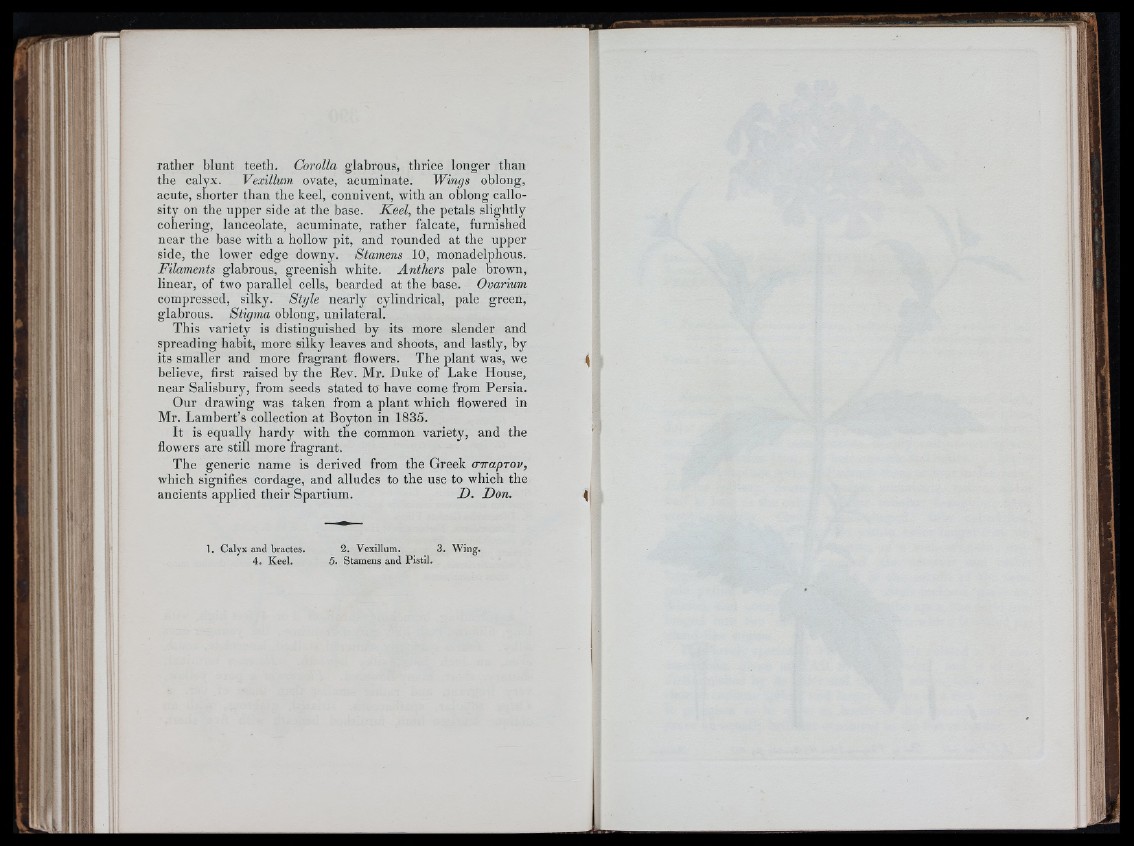
f. fl
rather blunt teeth. Corolla glabrous, thrice longer than
the calyx. Vexillum ovate, acuminate. Wings oblong,
acute, shorter than the keel, connivent, with an oblong callosity
on the upper side at the base. Keel, the petals slightly
cohering, lanceolate, acuminate, rather falcate, furnished
near the base with a hollow pit, and rounded at the upper
side, the lower edge downy. Stamens 10, monadelphous.
Filaments glabrous, greenish white. Anthers pale ff’own,
linear, of two parallel cells, bearded at the base. Ovarium
compressed, silky. Style nearly cylindrical, pale green,
glabrous. Stigma oblong, unilateral.
This variety is distinguished by its more slender and
spreading habit, more silky leaves and shoots, and lastly, by
its smaller and more fragrant flowers. The plant was, we
believe, first raised by the Rev. Mr. Duke of Lake House,
near Salisbury, from seeds stated to have come from Persia.
Our drawing w'as taken from a plant which flowered in
Mr. Lambert’s collection at Boyton in 1835.
It is equally hardy with the common variety, and the
flowers are still more fragrant.
The generic name is derived from the Greek airaprov,
which signifies cordage, and alludes to the use to which the
ancients applied their Spartium. D . Don.
1. Calyx and bractes.
4. Keel.
2. Vexillum. 3. Wing.
5. Stamens and Pistil.